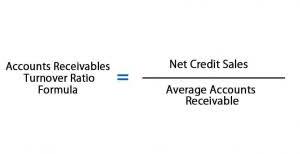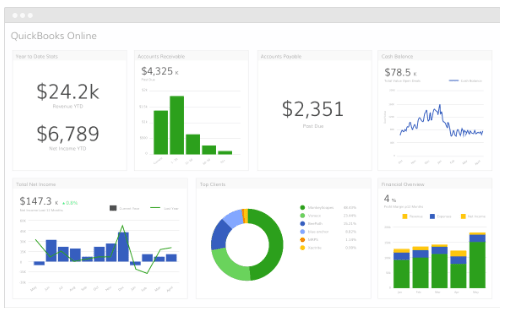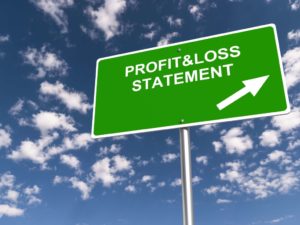Once all liabilities are taken care of in the hypothetical liquidation, the residual value, or “book value of equity,” represents the remaining proceeds that could be distributed among shareholders. Stockholders’ equity is a helpful calculation to know but it’s not foolproof. It’s important to remember that it may not reflect the amount that would be paid out to investors following a liquidation with 100% accuracy.
- One common misconception about stockholders’ equity is that it reflects cash resources available to the company.
- Stockholders’ equity is a company’s total assets minus its total liabilities.
- There are four key dates in terms of dividend payments, two of which require specific accounting treatments in terms of journal entries.
- By calculating shareholders’ equity, an investor can determine if a company has enough assets to cover its liabilities, which is an important factor in deciding whether a company is a risky or safe investment.
Learn financial statement modeling, DCF, M&A, LBO, Comps and Excel shortcuts. In general, a higher capital turnover ratio corresponds to greater upside in terms of revenue growth and profitability (and vice versa for lower ratios). Conceptually, the capital turnover therefore measures the proportion of a company’s sales generated per dollar of equity contribution. Conceptually, stockholders’ equity is useful as a means of judging the funds retained within a business.
Example of Shareholders’ Equity Calculation
Accounts payable, taxes payable, bonds payable, leases, and pension obligations are all included. Stockholders’ equity, also known as owner’s equity, is the total amount of assets remaining after deducting all liabilities from the company. A company’s equity position can be found on its balance sheet, where there is an entry line for total equity on the right side of the table. A company’s negative equity that remains prolonged can amount to balance sheet insolvency.
The number for shareholders’ equity also includes the amount of money paid for shares of stock above their stated par value, known as additional paid-in capital (APIC). This figure is derived from the difference between the par value of common and preferred stock and the price each has sold for, as well as shares that were newly sold. Shareholders’ equity may be calculated by subtracting its total liabilities from its total assets—both of which are itemized on a company’s balance sheet. In terms of payment and liquidation order, bondholders are ahead of preferred shareholders, who in turn are ahead of common shareholders. For instance, in looking at a company, an investor might use shareholders’ equity as a benchmark for determining whether a particular purchase price is expensive.
Over 1.8 million professionals use CFI to learn accounting, financial analysis, modeling and more. Start with a free account to explore 20+ always-free courses and hundreds of finance templates and cheat sheets. Long-term liabilities are obligations that are due for repayment over periods longer than one year. Companies may have bonds payable, leases, and pension obligations under this category. Shareholder equity influences the return generated concerning the total amount invested by equity investors.
- Take the sum of all assets in the balance sheet and deduct the value of all liabilities.
- All the information required to compute company or shareholders’ equity is available on a company’s balance sheet.
- In 2021, the share repurchases are assumed to be $5,000, which will be subtracted from the beginning balance.
- In the final section of our modeling exercise, we’ll determine our company’s shareholders equity balance for fiscal years ending in 2021 and 2022.
- Now that we’ve gone over the most frequent line items in the shareholders’ equity section on a balance sheet, we’ll create an example forecast model.
All the information needed to compute a company’s shareholder equity is available on its balance sheet. If a small business owner is only concerned with money coming in and going out, they may overlook the statement of stockholders’ equity. However, if you want a good idea of how your operations are doing, income should not be your only focus. Shareholder equity is not a perfect predictor of a company’s financial health.
Ask Any Financial Question
As a result, private equity firms collectively scored the highest last week as the company hit US$3.3b market cap following a 6.8% gain in the stock. Stockholders’ equity and liabilities are also seen as the claims to the corporation’s assets. However, the stockholders’ claim comes after the liabilities have been paid.
What is Capital Turnover?
We can apply this knowledge to our personal investment decisions by keeping various debt and equity instruments in mind. Although the level of risk influences many investment decisions we are willing to take, we cannot ignore all the critical components discussed above. Adam Hayes, Ph.D., CFA, is a financial writer with 15+ years Wall Street experience as a derivatives trader. Besides his extensive derivative trading expertise, Adam is an expert in economics and behavioral finance.
Treasury Shares
The value of $60.2 billion in shareholders’ equity represents the amount left for stockholders if Apple liquidated all of its assets and paid off all of its liabilities. Treasury shares continue to count as issued shares, but they are not considered to be outstanding and are thus not included in dividends or the calculation of earnings per share (EPS). Treasury shares can always be reissued back to stockholders for purchase when companies need to raise more capital.
While this figure does include money that could be returned to the owners of the company, it also includes items like depreciation and amortization, which cannot be directly distributed to shareholders. Cash takes up a large portion of the balance sheet, but cash is actually not considered an asset because it is expected that cash will be spent soon after it comes into the business. Often, this summary is accompanied by income statements and cash flow statements to provide a full picture of the company’s financial situation.
It is the difference between shares offered for subscription and outstanding shares of a company. On the other hand, liabilities are the total of current liabilities (short-term liabilities) and long-term liabilities. Current liability comprises debts that require repayment within one year, while long-term liabilities are liabilities whose repayment is due beyond one year.
At some point, accumulated retained earnings may exceed the amount of contributed equity capital and can eventually grow to be the main source of stockholders’ equity. Retained earnings are a company’s ein number net income from operations and other business activities retained by the company as additional equity capital. They represent returns on total stockholders’ equity reinvested back into the company.
When such a trade goes wrong, multiple parties may compete to sell stock fast. You can see Alvotech’s historic earnings and revenue below, but keep in mind there’s always more to the story. Paid-in capital also referred to as stockholders’ funds, is the amount of money that people have invested in a company. In contrast, early-stage companies with a significant number of promising growth opportunities are far more likely to keep the cash (i.e. for reinvestments). Assessing whether an ROE measure is good or bad is relative, and depends somewhat on what is typical for companies operating within a particular sector or industry.




